Put simply, a heater core is part of your automobile’s climate control system and helps fill your car, truck, or SUV’s passenger compartment with warm, comfortable air. In other words, a heater core lets you stay toasty as you drive, regardless of the temperature outside.
Not only that, your heater core plays a huge role in defogging and defrosting your windows, making it a critical safety feature too.
Suffice it to say, a heater core is a really important part of your vehicle’s HVAC system.
So yeah, it’s vital that your car or truck’s heater core is in good, working order to keep your passenger compartment cozy and your windows fog-free. To help yours stay that way, let’s dive into a little automotive heater core 101.
Looking for a good replacement heater core for your car, truck, or SUV? Click here.

How Does a Heater Core Work?
A heater core works in the same way as your engine’s radiator—only with a different goal. A radiator is there to keep your engine operating at a consistent temperature and most of its job involves cooling the engine by extracting heat to dissipate in the ambient air.
A heater core extracts heat from your engine too, only the heat it extracts is used by your vehicle’s climate control system to warm the air in the passenger cabin.
Heater cores and radiators are both referred to as heat exchangers, which is a fancy way of saying they take heat from a source (the engine) and transfer it to a fluid—in this case, ambient air (and yes, air is a fluid).

For an internal combustion engine (ICE), your heater core is fed with engine coolant. That means it’s plumbed into your engine and requires specialty heater hoses too. (That’s also the reason that your car or truck will take a while to heat up inside after its initial startup, as the heater core requires hot engine coolant to produce heat.)
In a nutshell, the heater core absorbs the heat from the engine coolant. Then, air is pushed through the heater core via your HVAC blower motor, heating it up on its way to the passenger cabin.
Make sense? We made a quick heater core diagram below using our state-of-the-art rendering software to better explain it.
A Heater Core Operation Diagram
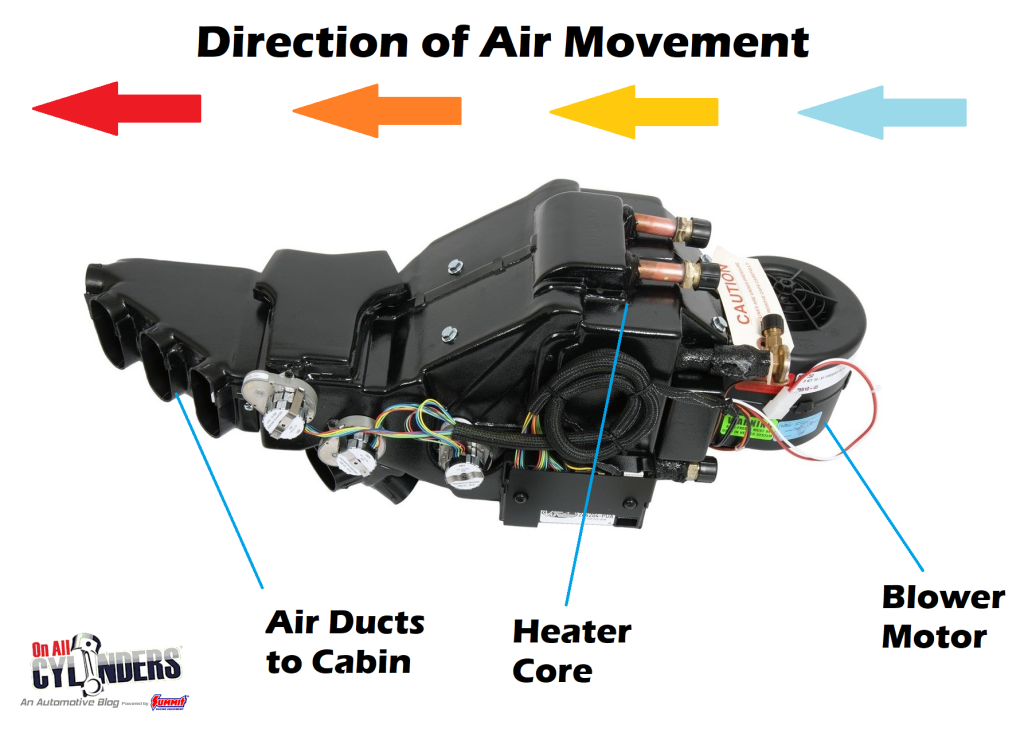
Symptoms of a Bad Heater Core
So, how can you tell if you need a new heater core? Well, there are a handful of signs that you need a replacement heater core—here are some good places to start:
- Lack of heat coming from the vents (duh)
- Sweet smell of coolant in the cabin
- Window defoggers become ineffective
- General coolant loss
- Lack of airflow when the heat is turned on
- Wet floormats/damp footwell carpet
- Stains in the carpet, usually green (depending on your coolant type)
- Evidence of coolant leaks on firewall on engine bay side (residue, deposits)
If you’re experiencing any of these bad heater core symptoms, understand that heater cores may fail in a handful of ways.
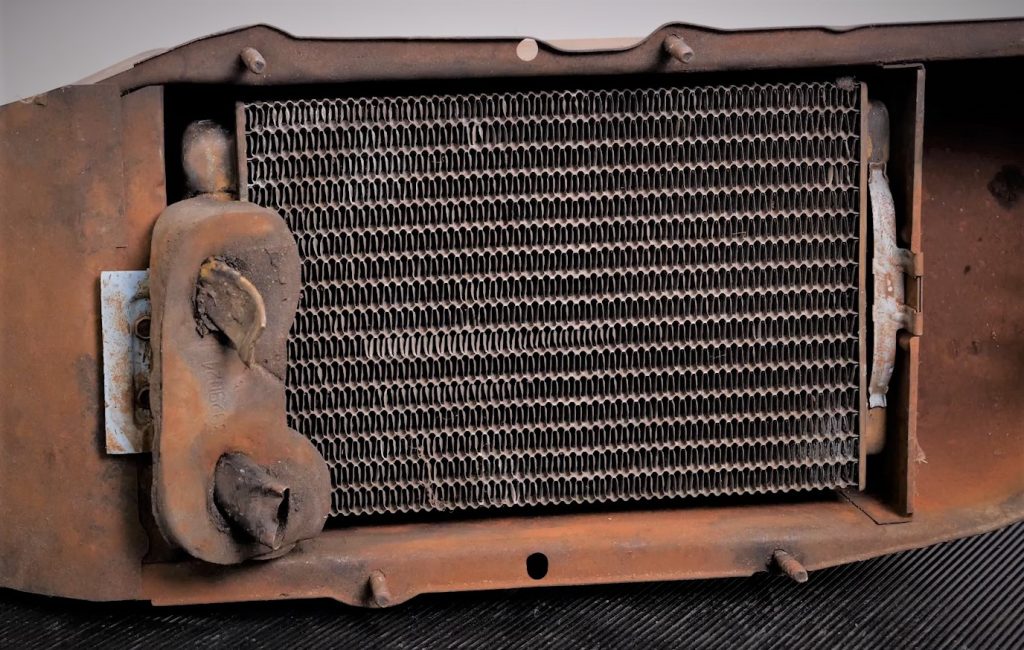
For starters, since they’re often subjected to vibration, heat cycles, and potential chemical coolant contamination, heater cores can develop leaks. Sometimes these leaks are from a crack at a brazed copper joint, while other times they’re just tiny pinhole leaks from pitting and age. Whatever the cause, heater core leaks usually manifest in the smell of coolant inside the vehicle, soggy, stained footwell carpet, or just a chilly interior.
If the air is getting warm but your fan speed control settings aren’t working properly (or if your fan isn’t working at all), then you may have a bad blower motor resistor. You can read about those here: What is a Blower Motor Resistor? And How Can You Tell if Yours is Bad?
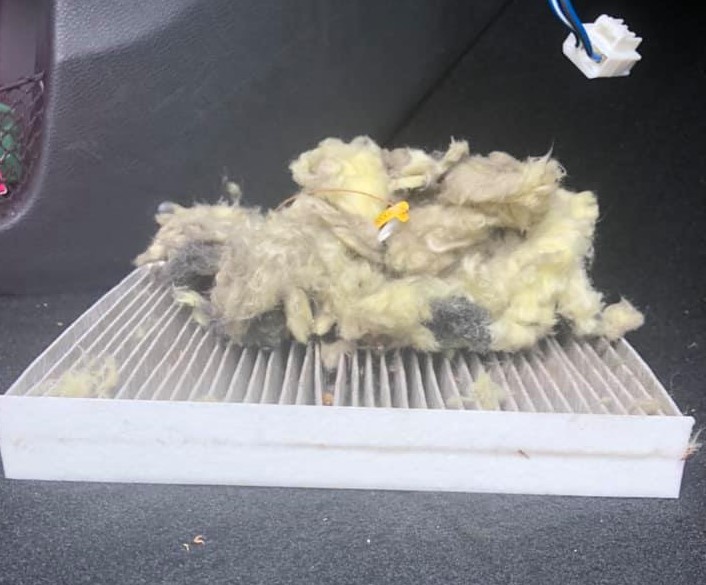
Secondly, heater cores can get clogged, both on the inside and outside.
If your blower motor is sucking in crud and debris, there’s a good chance it’ll wind up crammed in the fins of your heater core (something that’s especially true on older cars without a cabin air filter). So if you notice a lack of airflow coming from your vents, first check your cabin air filter, then see if you can get a look at your heater core—though that may take some specialty tools like an inspection mirror or a borescope.
If your vents are still moving plenty of air, but it’s just not getting warmer, you may have a heater core that’s clogged internally. In these cases, it means that deposits and corrosion are preventing the hot engine coolant from making its way through the heater core fins. The air from the blower motor is moving just fine—it’s just not getting hot because the heater core is still cool.
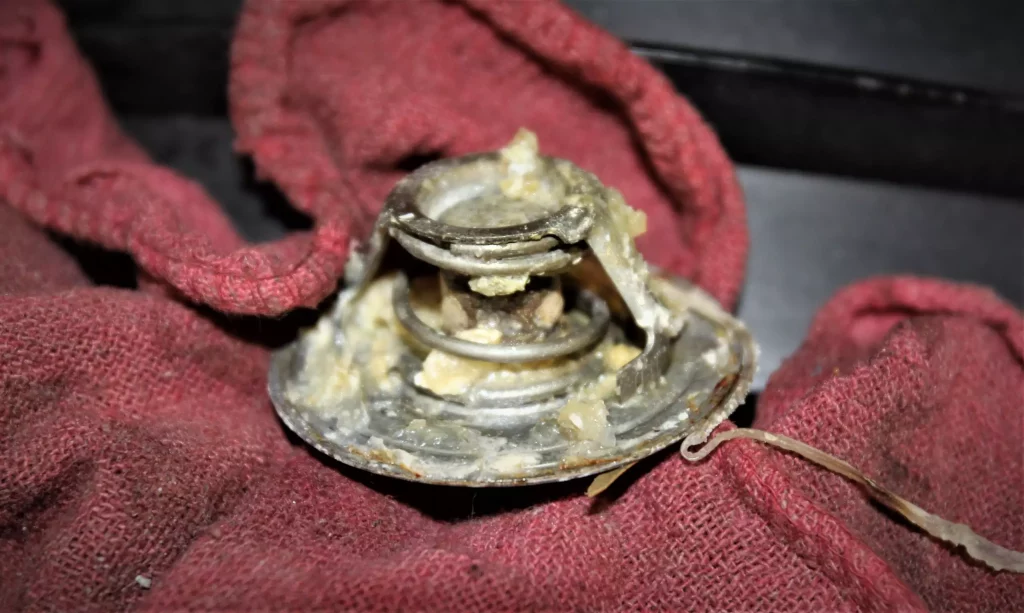
Can You Flush a Heater Core to Unclog It?
If you think the inside of your heater core is clogged up, then there’s a chance you may be able to flush it out and unclog it. Though this process doesn’t guarantee success, it’s often worth a shot before going to the hassle or expense of a replacement heater core swap.
In the name of brevity, flushing a heater core typically involves removing the two inlet/outlet hoses on the vehicle’s firewall, right at the heater core hose barbs, and replacing them with two temporary (and preferably clear) hose sections. You’ll flush your water source into the inlet port, and then attach a hose to the outlet port and feed it down into a catch bucket.
(We’ll explain how to tell the difference between the heater core inlet/outlet ports at the bottom of this article.)
Be careful though, as you really, really, really want to avoid excessive water pressure that could burst the seams of your heater core.
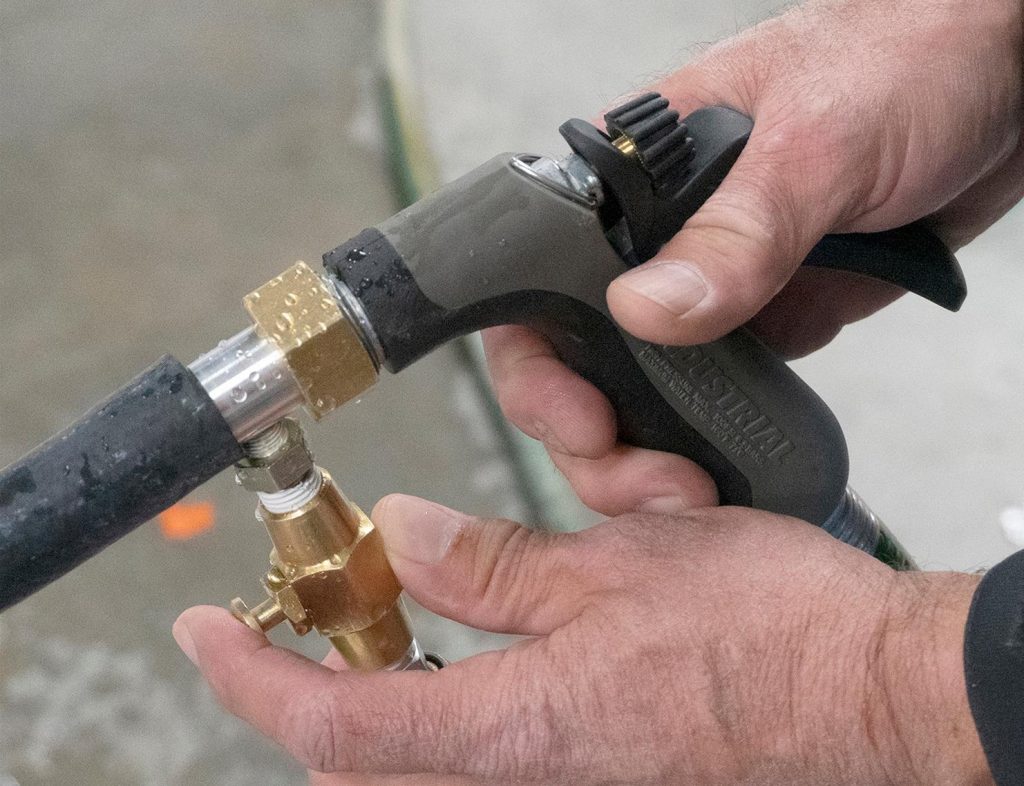
Once it’s all connected, you simply begin flushing the water through the heater core, taking note of any grit or debris that comes out the other side. Again, don’t apply too much water pressure and keep a keen eye on the dump hose, once the water that’s coming out of the heater core outlet is clear, then your work is over.
Several companies make cooling system flush kits and solutions that can further help dissolve and break up deposits that can clog up a heater core as well.
Where is the Heater Core Located in a Vehicle?
While all cars, trucks, and SUVs differ, in our experience, the heater core will be located inside the passenger cabin. And for a domestic left-hand drive vehicle in the United States, especially older models, there’s a good chance that the heater core will be located on the passenger side of the vehicle.
You can usually spot yours by looking for those two heater hoses that route into the firewall of your engine bay—those are the aforementioned heater core inlet/outlet lines.
We’ll talk about the distinction between the inlet and outlet hoses in a moment, but for now, remember that in an ICE application, a heater core shares its coolant with the rest of your engine’s cooling system. The coolant enters the heater core, passes through the fins, on its way back into the engine cooling system, hence the two ports.
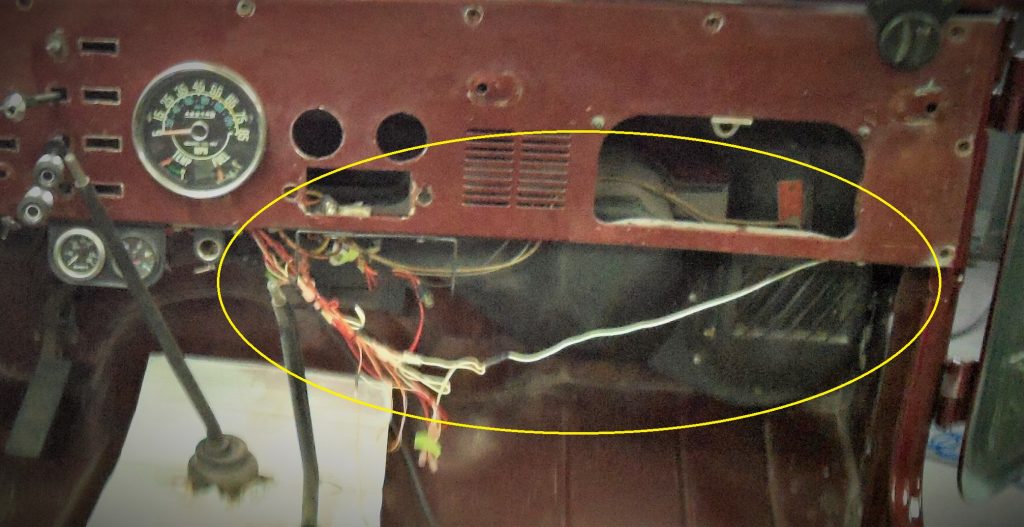
Now here’s where it gets interesting.
Thanks to their location inside the passenger area, heater cores can be pretty difficult to get at—we’re talking potential remove-the-entire-dash level difficulty here.
While some older cars and trucks have a handy access panel in the engine bay, many newer vehicles do not, which means you’ll probably have to do some interior disassembly to do a heater core swap or repair.
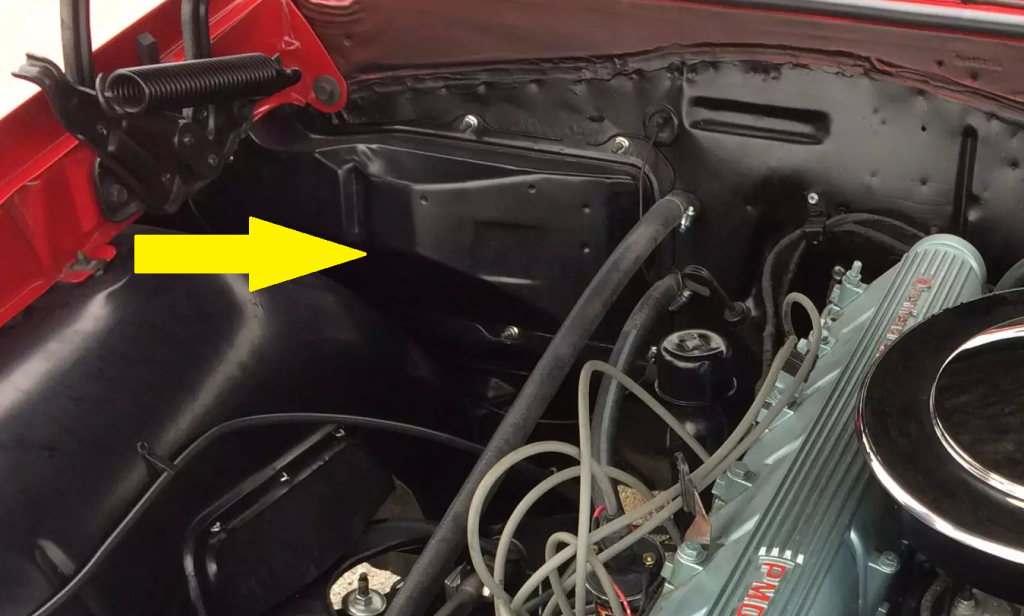
The difficulty of a heater core swap or repair is entirely dependent on your vehicle. And that’s particularly true in modern cars, where you’ll often have to contend with things like sound/heat insulation, airbags, and more complex infotainment and HVAC system components.
Once you actually get to the old heater core module, it’s usually a pretty straightforward swap-in/swap-out affair. Then, of course, you have to put everything back—so we wouldn’t make any extravagant dinner plans when its time to do the job.
How Can You Tell Which Heater Core Hose is the Inlet and Outlet?
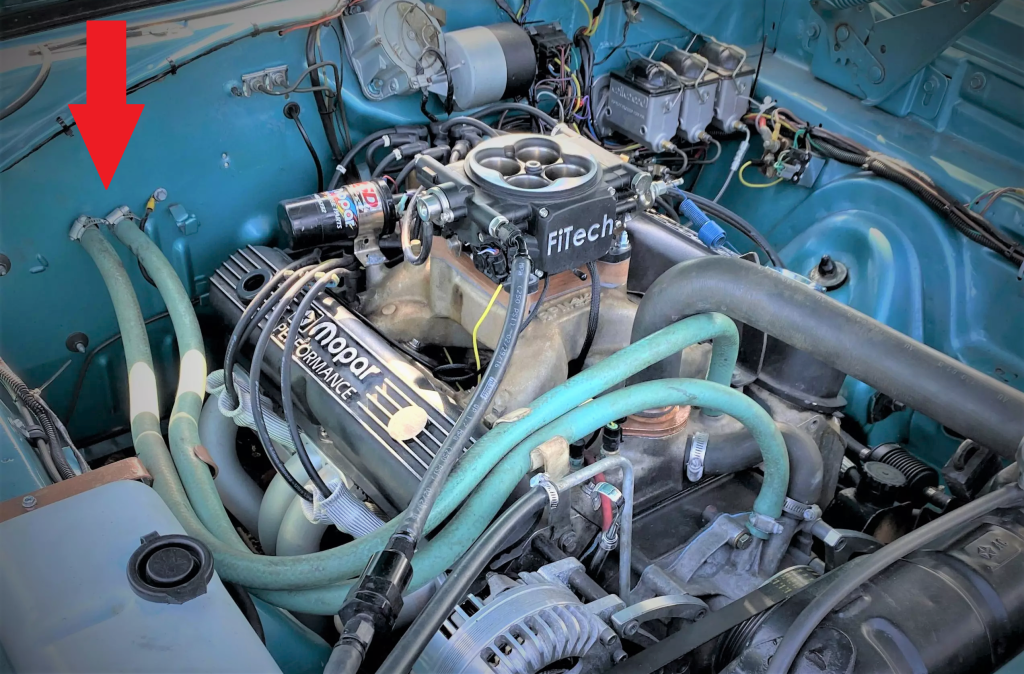
Remember when we said there’s a distinction between the heater core inlet and outlet hose? If you’re doing any heater core repair that requires you to remove those hoses, then you want to make sure you connect them back the same way. If you don’t, you could end up restricting the flow of coolant through the heater core and ultimately the entire engine cooling system—which, spoiler alert, isn’t ideal.
But distinguishing between the two hoses isn’t that tough.
To begin with, there’s a good chance that the two hoses will be different sizes. Generally speaking, the inlet hose will be a slightly smaller diameter than the outlet hose. (Sometimes you’ll get lucky and the hose barbs or bulkhead will be labeled inlet/outlet, but don’t count on it.)
Still not sure which is which? Just run the engine for a bit and—carefully—touch each hose. The hotter one will be the inlet, and the cooler one is the outlet.
And if there’s still some confusion, the inlet hose will be coming from the engine and the outlet will be retuning to the water pump or radiator. Just remember the fundamental principle that your heater core inlet is typically going to receive coolant at or near its hottest point, which usually means directly from the engine. And the outlet is going to usually feed the newly-chilled coolant back to the water pump or radiator so it can start a new journey through the motor.
Looking for a good replacement heater core for your car, truck, or SUV? Click here.
Learn More About Automotive Heating & Cooling in this Podcast
Want to take a deeper dive into vehicle heating and cooling systems?
A while back, we sat down with Rick Love, President of Vintage Air, for a 30 minute chat all about vehicle climate control systems. Though the talk centered primarily on air conditioning, we covered some general topics too, including installs/retrofits and common HVAC diagnostics—you can hear it all in the podcast episode below:

Comments